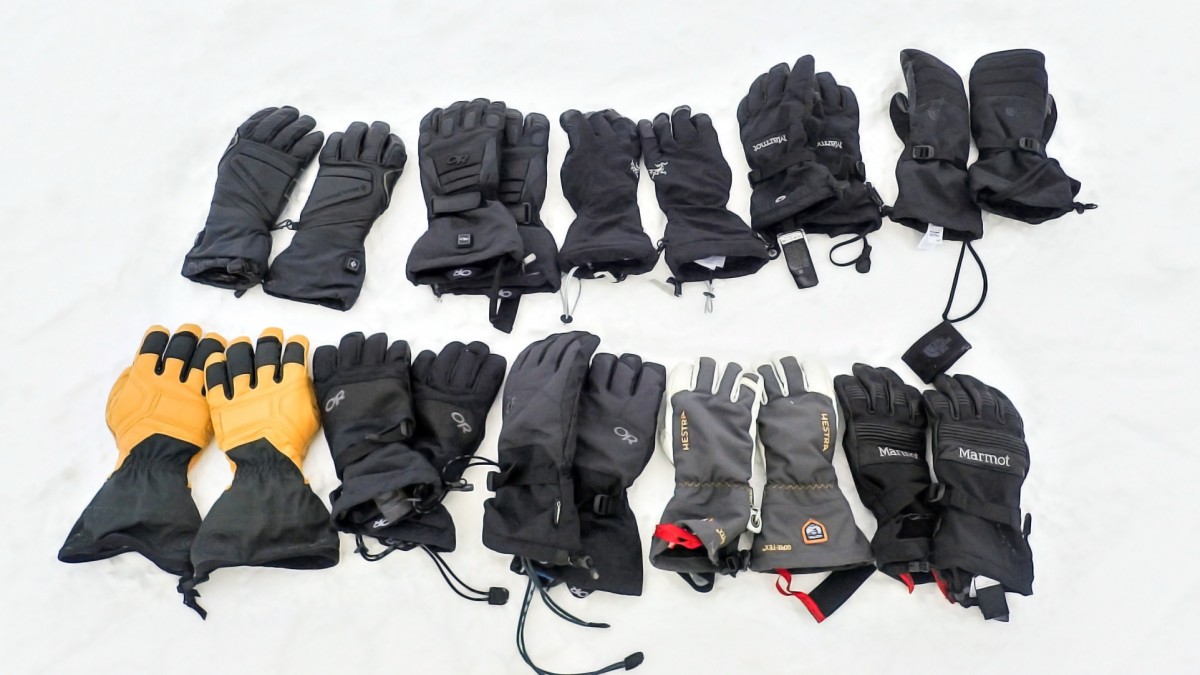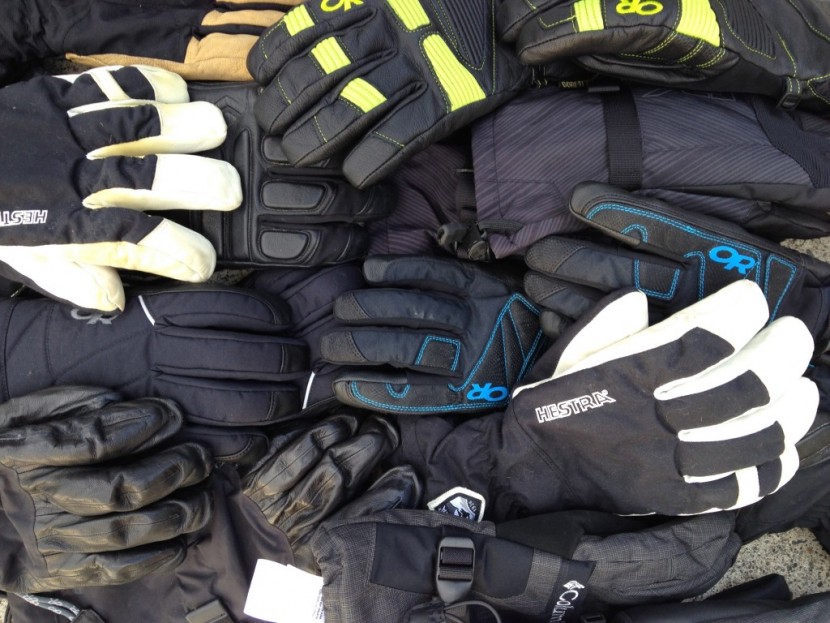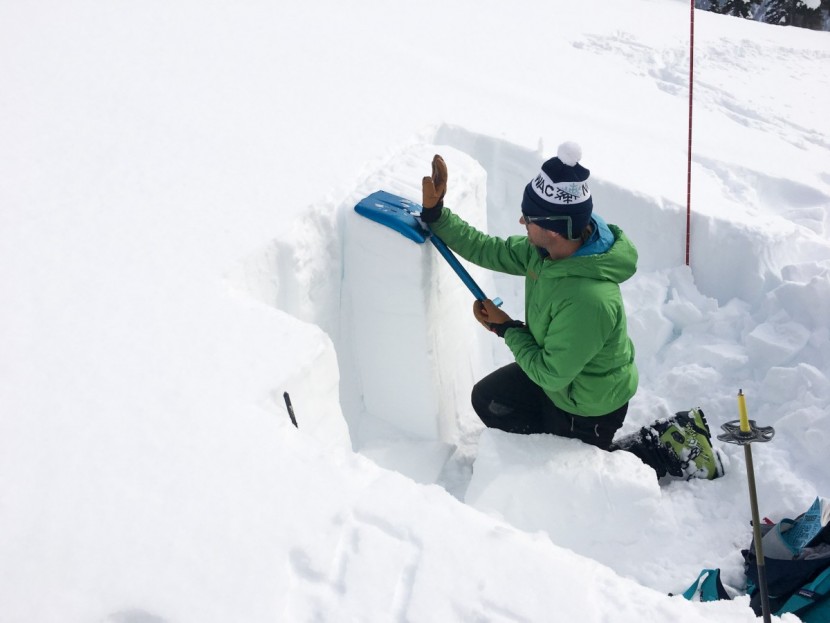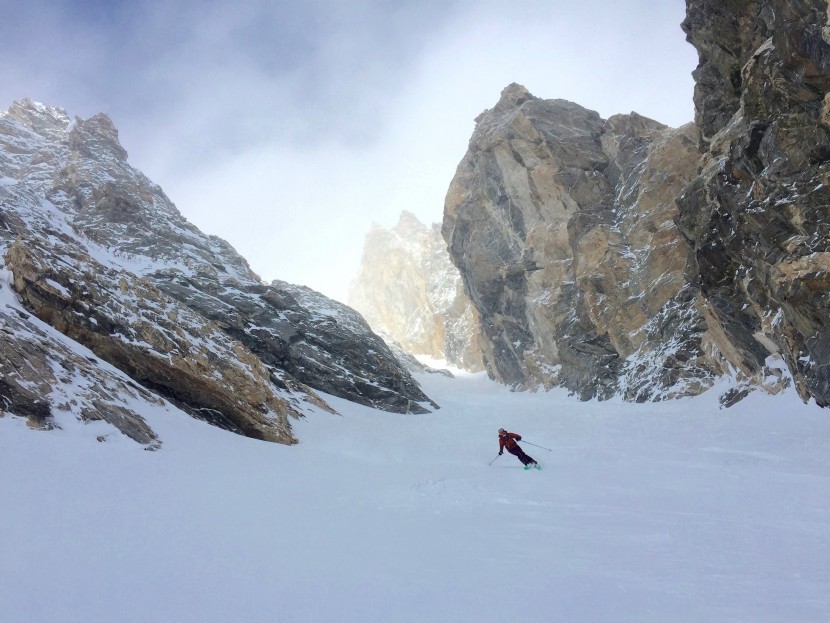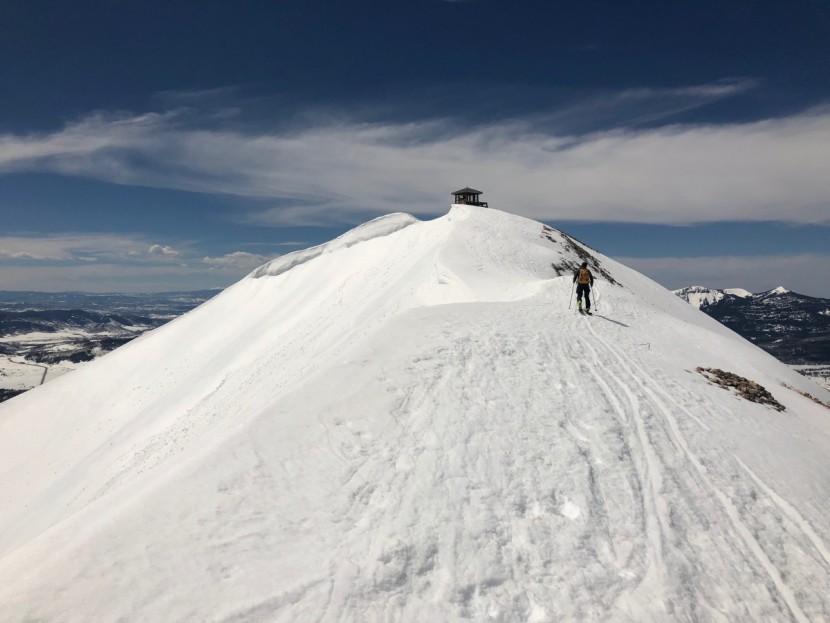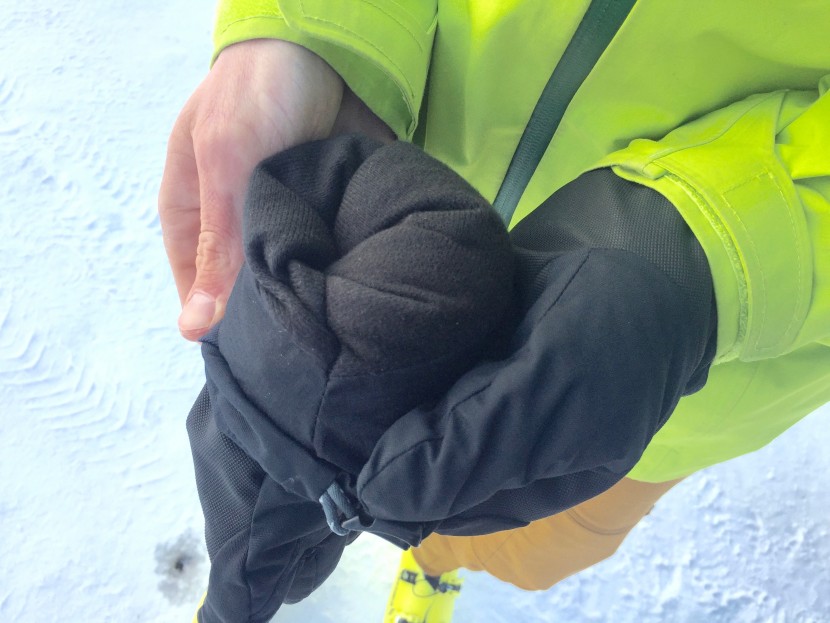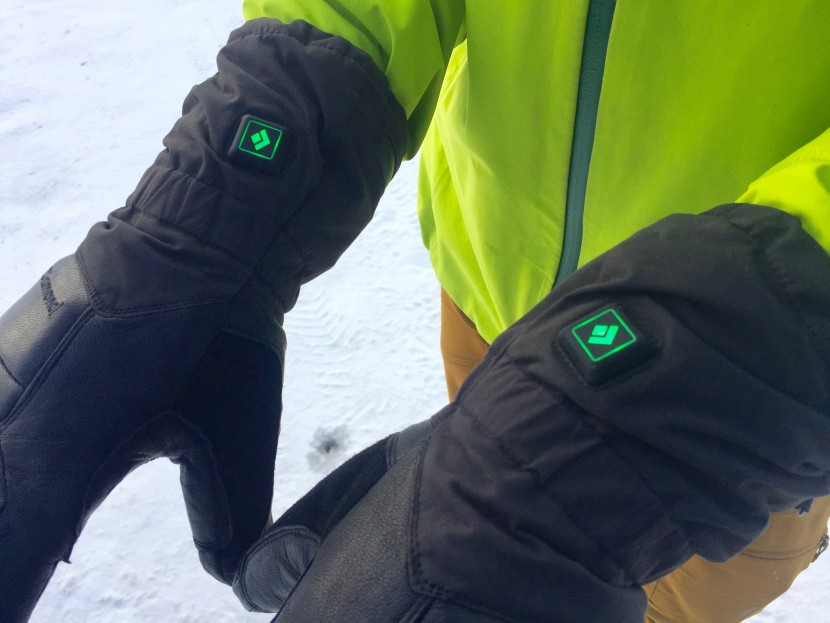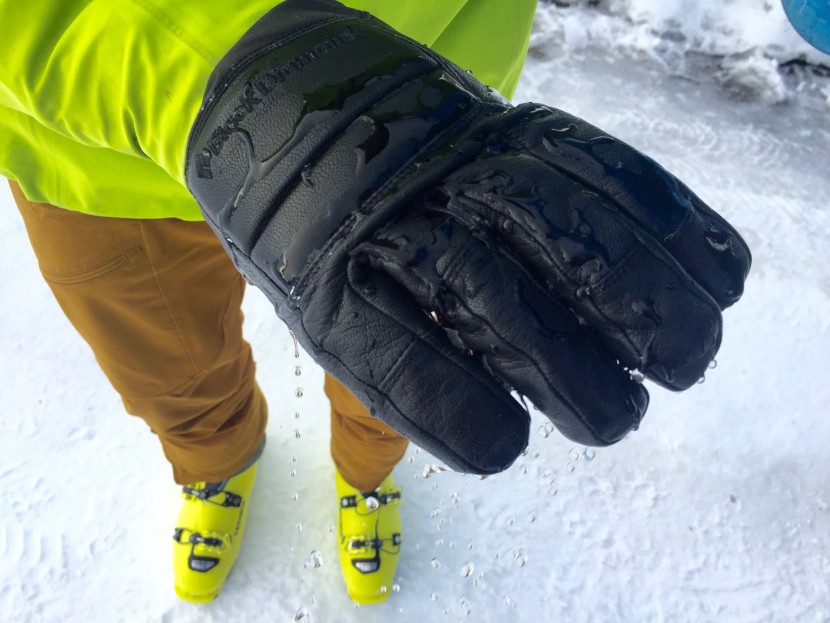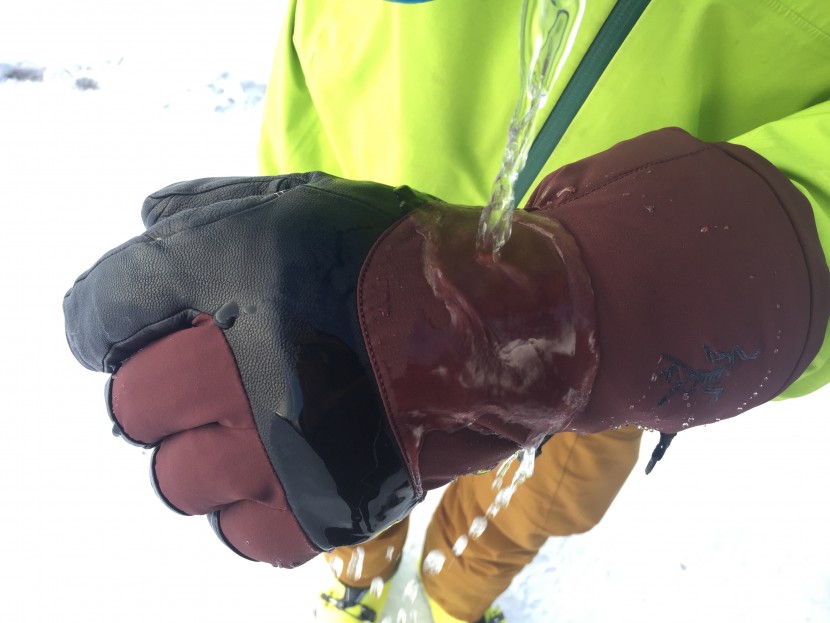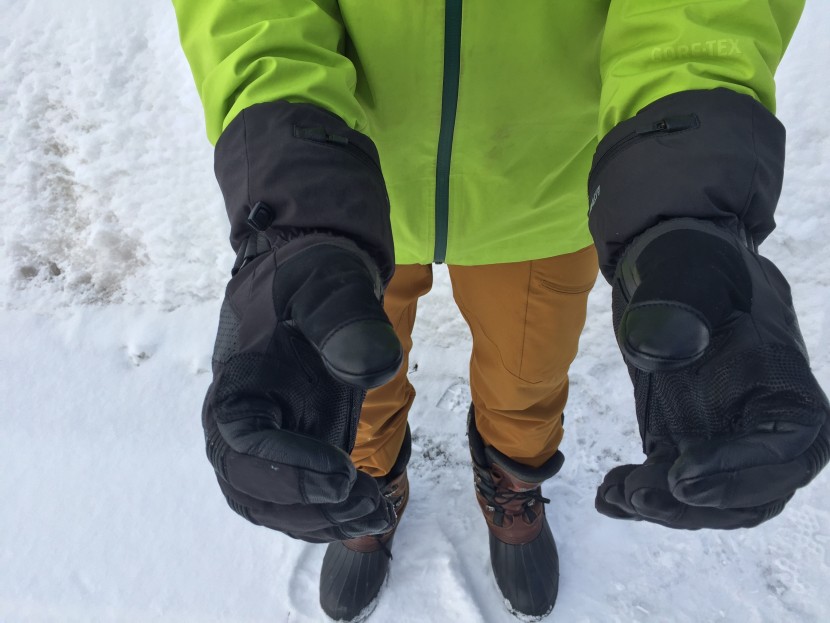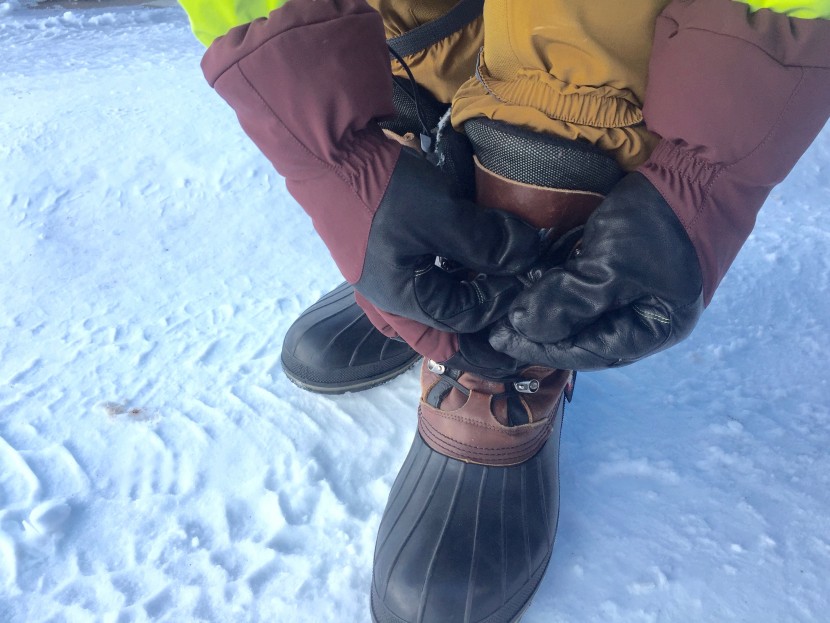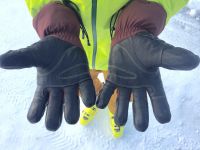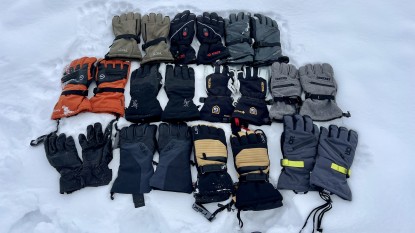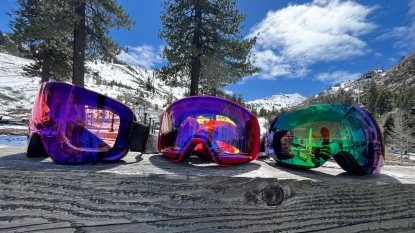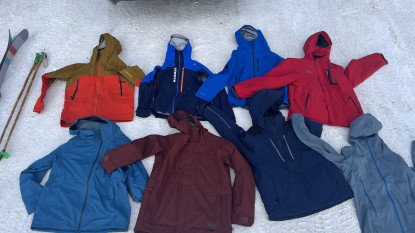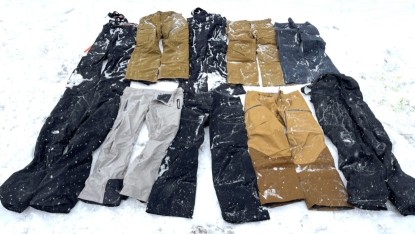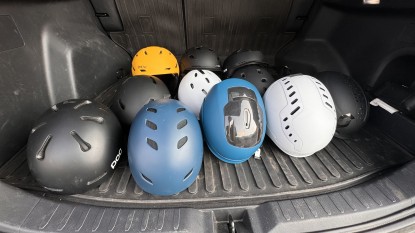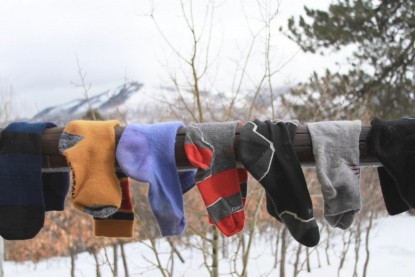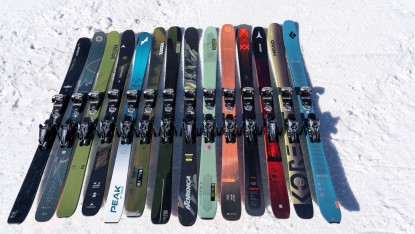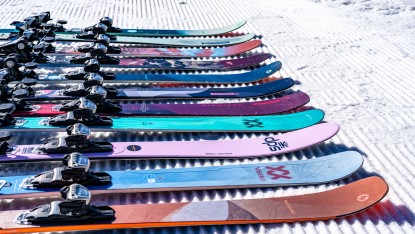Our hands need protection when we venture out into the snowy mountains. To keep them from freezing, we wear gloves or mittens. But we also need our hands to perform basic tasks without taking those gloves off. It's also important that our hands stay dry and comfortable throughout an entire day, too. Read on for some helpful advice about how to choose the best pair of ski gloves or mittens for your needs.
Gloves or Mittens?
The first choice you'll face is whether to get a pair of gloves or a pair of mittens. In the past, mittens have been the warmest option available. By keeping all four fingers in the same compartment, along with the palm, body heat is shared between the whole hand, warming up any fingers that might get chilly. On the other hand, gloves separate each finger into their own compartments, where they have to produce enough heat to keep themselves warm. The major downside of mittens is their near-complete lack of dexterity. By eliminating the individuality of each finger, we lose the ability to perform most tasks while wearing mittens.
However, recent developments in glove design and construction have allowed gloves to catch up to mittens in the warmth department, cutting into the warmth advantage of mittens. Still, some skiers prefer mittens, and others have a pair that they throw in the backpack on cold days in case their warmest pair of gloves is still not enough to ward off frostbite. Mountaineers, backcountry skiers, and ice climbers have relied on mittens as a backup in the coldest conditions on earth.
With the advent of heated gloves, skiers and riders can now keep their hands warm in arctic temperatures without sacrificing dexterity. As such, unless weight is an issue, mittens are now mostly a style and comfort preference rather than a practical choice. For most skiers, even those who complain about cold hands even on mild days, we'd recommend a heated glove over a mitten when warmth is the concern because heated gloves still provide moderate to good dexterity. If you never have to remove your gloves to perform basic tasks, your hands will stay warmer over the course of a full day, compared to the constant on-and-off that mitten enthusiasts encounter. For expedition climbers or those who need the warmest handwear and cannot charge their heated gloves each night, mittens are still a good option.
Warmth
Once you choose between gloves and mittens, the next question to answer is how warm of a glove you'll need. For simplicity, we'll refer to both gloves and mittens as “gloves” from here. Think about the average temperatures where you normally ski. If temperatures are regularly far below freezing, choose a glove that scores highly in our “warmth” metric. If you ski in mild winter climates, most ski gloves will be warm enough for you, and other metrics like water-resistance are more important. Gloves achieve warmth by packing the shell full of synthetic or fleece insulation. In general, the more insulation, the warmer the glove. Some gloves have electrical heating elements. We discuss that below.
Next, consider how your hands normally feel on the ski hill. If you always seem to have cold hands or wear handwarmers, choose a warmer glove. Others won't need super warm gloves. If cold hands aren't usually an issue for you, then focus on other metrics. Everyone is different, so be honest with yourself about where you fall on the spectrum.
Some glove manufacturers offer a temperature rating with their gloves in an attempt to help the consumer decide how much warmth a glove will deliver. In our experience, the exact temperature rating on a glove is almost always inaccurate due to large differences in users' body temperatures.
Insulation Material
Warmth is accomplished by trapping the body's naturally produced heat, which is radiated out through the hand. Synthetic or “puffy” insulation is very similar to that used in the walls of houses and is the most efficient insulation material used in gloves. Alternatively, fleece works the same way as synthetic insulation, but it is heavier and bulkier for the same amount of heat trapped. As such, most gloves use synthetic insulation, with just a thin fleece liner on the inside of the hand chamber to add comfort and some warmth. For most skiers, we recommend a glove with both synthetic insulation and a thin fleece lining. Thinner gloves on the market use just a fleece liner, usually on the inside of a leather glove, to provide a small amount of insulation. This type of glove is best for hardcore skiers who are hiking for their turns, skiing aerobically in steep terrain, or backcountry skiing. In rare cases, gloves use only synthetic insulation. This provides the best possible warmth-to-weight ratio, and as such, these gloves are appropriate for ski mountaineering and alpine climbing in addition to resort skiing.
Heated Gloves
Some gloves are equipped with an internal battery-powered heating element that provides additional heat to your fingers and hands, besides what the hand produces naturally. These are nice for skiing in cold climates, for the first hour of the day on the ski hill, for the coldest days of the winter, and for skiers who are always getting cold hands. If any of these conditions describe you, think about making the investment in heated gloves. They're expensive, but you'll never have cold hands again, as long as you remember to charge your battery. For the average skier, they are nice but not necessary.
All heated gloves in our review feature three heat settings in addition to “off,” where the glove will still perform like a normal glove without additional heat. Not all heated gloves produce the same amount of heat. Some provide finger-roasting heat that will bring your fingers back from frostbite, and others offer just a touch of warmth to supplement your body heat on cold mornings. All options are great for skiers on the coldest days, but if you plan on using your gloves for other activities like snowmobiling or sledding, consider an option that produces more heat.
Water Resistance
After deciding about warmth, you'll need to consider how much water resistance you'll need. In the coldest winter climates, liquid water is rarely encountered on the ski slopes most of the winter, and dry snow can be brushed off the glove easily. In milder, coastal winter climates, liquid water may be encountered regularly, and waterproof gloves are an important component of a ski outfit. If you ski in a wet climate, buy a glove with a waterproof membrane and a high score in our Water Resistance category. Even the warmest gloves will feel cold if your hands are wet. Skiers in the coldest winter climates can get away with a glove with less water resistance, but in general, the warmest gloves also come with a waterproof membrane.
Waterproof Membranes
Most gloves that are truly impervious to water feature a waterproof and breathable membrane, which is a fabric layer between the outer shell of the glove and the insulation within. Gore-Tex is the most common (and expensive) of these and is featured on the products with the highest scores in the water-resistance metric in our review. However, some companies have their own waterproof/breathable membranes that work just as well. It is important to note that just because a glove has a waterproof fabric insert, it isn't necessarily impervious to water.
Outer Shell
The other main component of water resistance is the outer shell fabric. A waterproof membrane will prevent water from entering the internal hand chamber, but if the outer shell gets soaked through, the glove will feel waterlogged, cold, and might take a long time to dry out. The most water-resistant gloves in our review feature a softshell fabric that repels water, along with tough leather, which we treat with a leather balm a couple of times every season. If you are skiing every day or live in a wet climate, a glove with both a waterproof membrane and a water-resistant shell is a must.
Gauntlet or Cuff?
Ski gloves feature one of two openings, a wide gauntlet that reaches up the forearm or a low profile cuff opening that wraps tightly around the wrist. Gauntlets help less experienced skiers keep wind, water, and snow out of their gloves by adding physical distance between the glove opening and the hand. They also insulate the wrists and close-to-skin blood vessels, which are often left uninsulated at the glove cuff opening. In general, gloves with gauntlets are warmer and more water-resistant than gloves with cuff closures.
On the other hand, gloves with shorter wrist cuffs are lower-profile, less bulky, and easier to manage than gloves with gauntlets. For more experienced skiers who know how to keep their hands warm, cuffs allow the glove to slide easily into the opening of a jacket, whereas gauntlets are often difficult to slide underneath a jacket cuff. Many experienced skiers, ski patrollers, and guides prefer gloves with cuffs because they are light and svelte and keep bulk to a minimum. If you are looking for the warmest gloves, period, go for one with a gauntlet. If you care about bulkiness or want a more refined style, go for a glove with a cuff closure.
Dexterity
By now, you have decided whether to buy a glove or a mitten, you've decided how warm and water-resistant your glove needs to be, and you've chosen to get a glove with a cuff or one with a gauntlet. You're getting close! Next is to decide how much dexterity you'll need. Some skiers need to perform tasks with their fingers all day long, like ski patrollers, ski guides, ski instructors, and parents. Others just need the ability to thread their pole straps and lower the bar on the chairlift.
Glove manufacturers strive to pack their gloves full of insulation and waterproof material, but not so much as to impede the skier's ability to use their fingers. To do so, they employ strategic sewing techniques and supple materials to prevent annoying fabric buildups in the fingers. Despite these clever tailoring details, the warmer the glove, the less dexterous it will be. Some of the lightweight options are barely noticeable during tasks that require fine motor skills. These gloves usually aren't very warm, either. They are great for backcountry skiers and outdoor professionals on mild days. The warmest gloves in our test also feature the least dexterity. They are great for resort skiers who encounter cold days regularly. If you need a glove with warmth and dexterity, a few options exist, and they are usually more expensive.
Palm and Finger Materials
In addition to smart tailoring, materials make a big difference in a glove's dexterity. Soft and supple leathers are best for finger precision, while synthetic palm materials aren't as sensitive. We prefer real leather, which is more expensive than synthetic leather. Other gloves feature rubbery palm materials, which also offer good dexterity, but wear out quickly.
Construction Quality
After considering dexterity, your search should be narrowed down to just a few options. One final thing to think about is construction quality and durability. High-performance ski gloves aren't cheap, and we want them to last a long time. The bad news is that the same materials that provide good dexterity are often those that wear out the fastest, most notably soft leathers. Still, most real leathers in our review last a long time, especially when treated with a leather balm once or twice a season. Synthetic palm materials and rubbery fabrics are cheaper, but they wear out quickly. You might have to make a choice to invest in a more expensive, well-tailored, leather-palmed option to get a more durable glove. The good news is that most companies stand by their products and offer robust warranty programs, meaning that if a glove does not meet your expectations for a reasonable lifespan, they will help you replace the glove for little to no money.
A Note on Features
We like gloves that come with a set of features that help augment their performance in other metrics and make life easier on the ski hill, but we rarely consider them to be essential. That includes things like wrist leashes, soft fabric patches for wiping your nose, and liners. Other gloves feature touchscreen-compatible fingertips, clips for hanging the gloves together, handwarmer pouches, heating elements, and wrist cinch straps. While these features can be nice to have, in our opinion, a glove's features never make or break the product; good performance in cold, wet weather is more important.
Fit
After deciding on which pair of gloves or mittens to purchase, take a moment to ensure you have a proper fit. If ordering online, check for a correct fit as soon as the glove arrives, so you can return or exchange your purchase if needed. There are two main areas where a glove should fit. The first is the length. Your fingertips should be just barely touching the end of the glove, or there should be a very small amount of space that you can pinch between your finger and the end of the glove. Too much space, and you'll sacrifice durability. If your fingers are smashing against the end of the glove, the fabric will impede circulation to the vulnerable skin at the end of your finger. The second place to check for a proper fit is in the wrist. Most gloves feature an elastic wrist cinch, and some feature an adjustable velcro or pull-tab cinch strap. If the wrist isn't adjustable, be sure that the wrist opening is snug but not so tight that you have to strain to get the glove on.

